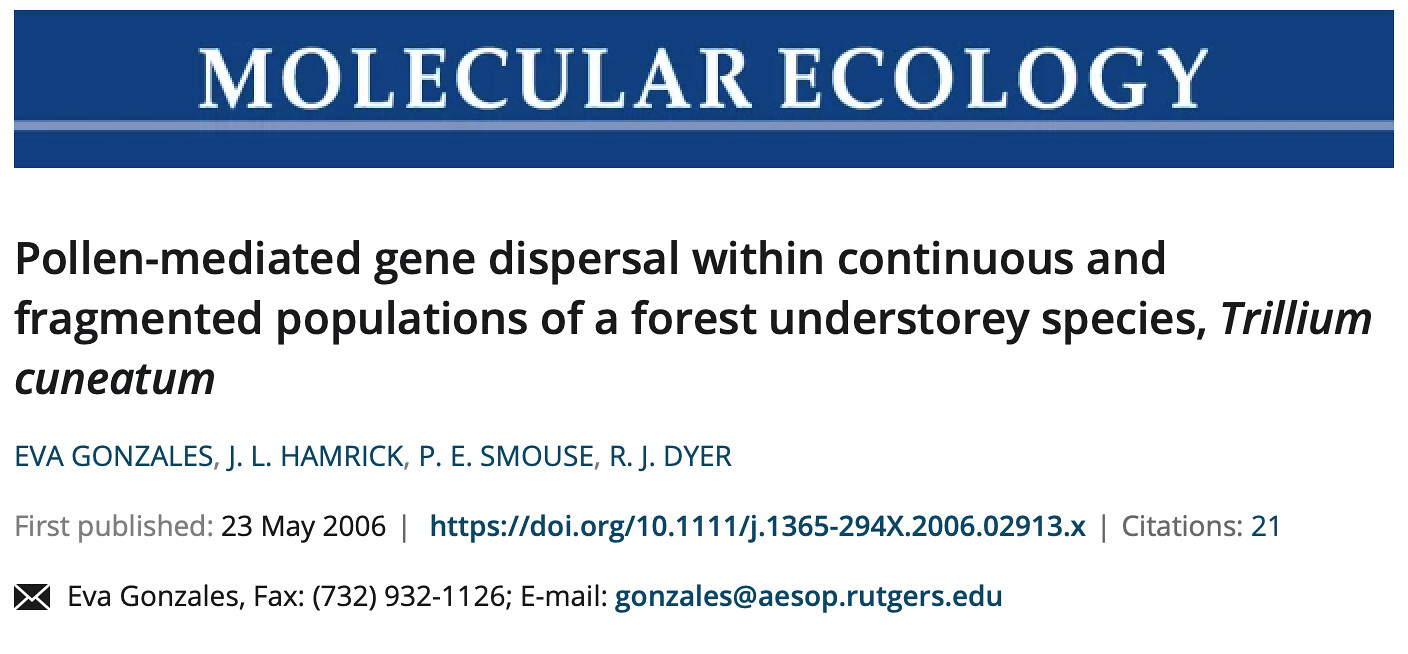
Pollen-mediated gene dispersal within continuous and fragmented populations of a forest understorey species, Trillium cuneatum
Abstract
Pollen movement plays a critical role in the distribution of genetic variation within and among plant populations. Direct measures of pollen movement in the large, continuous populations that characterize many herbaceous plant species are often technically difficult and biologically unreliable. Here, we studied contemporary pollen movement in four large populations of Trillium cuneatum. Three populations, located in the Georgia Piedmont, are exposed to strong anthropogenic disturbances, while the fourth population, located in the Southern Appalachian Mountains, is relatively undisturbed. Using the recently developed 2Gener analysis, we extracted estimates of the effective number of pollen donors (N-ep), effective mating neighbourhood size (A(ep)) and the average distance of pollen movement (delta) for each population. We extended the 2Gener method by developing inference on the paternal gametic contribution to the embryo in situations where offspring genotypes are inferred from seeds and elaiosomes of species with bisporic megagametogenesis. Our estimates indicate that maternal plants do not sample pollen randomly from a global pool; rather, pollen movement in all four populations is highly restricted. Although the effective number of pollen donors per maternal plant is low (1.22-1.66) and pollen movement is highly localized in all populations, N-ep in the disturbed Piedmont populations is higher and there is more pollen movement than in the mountains. The distance pollen moves is greater in disturbed sites and fragmented populations, possibly due to edge effects in Trillium habitats.